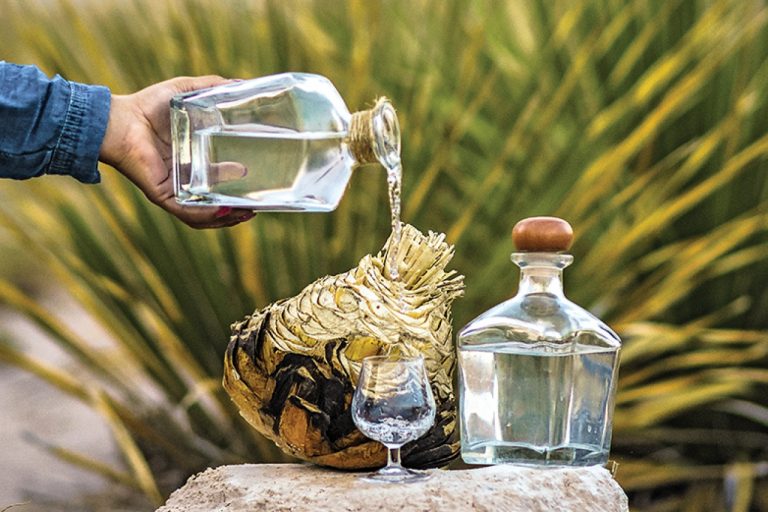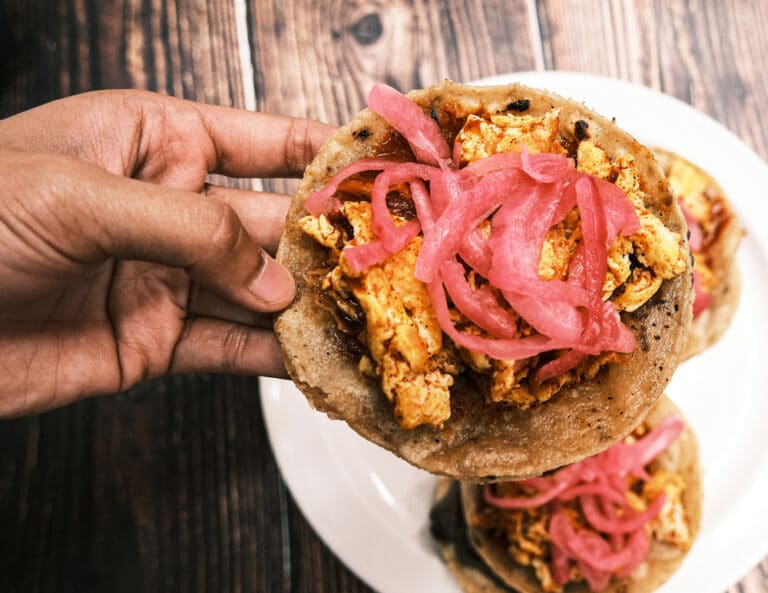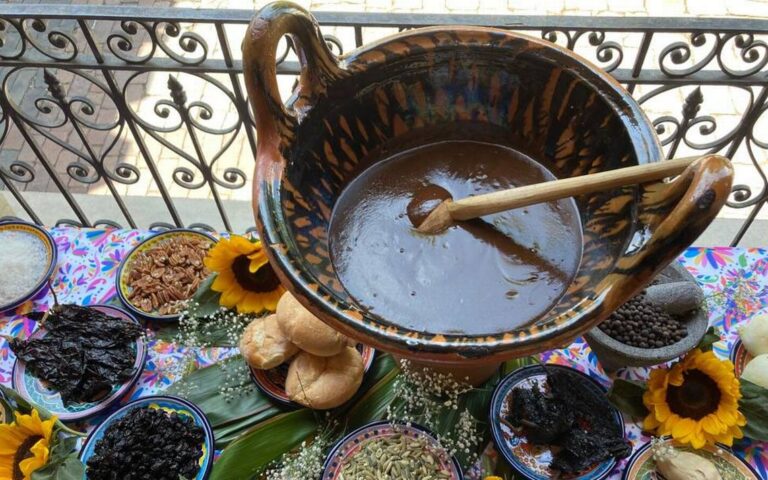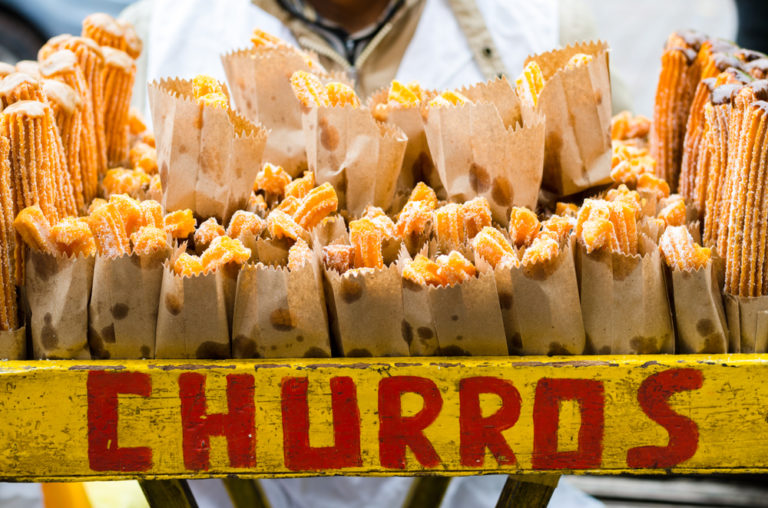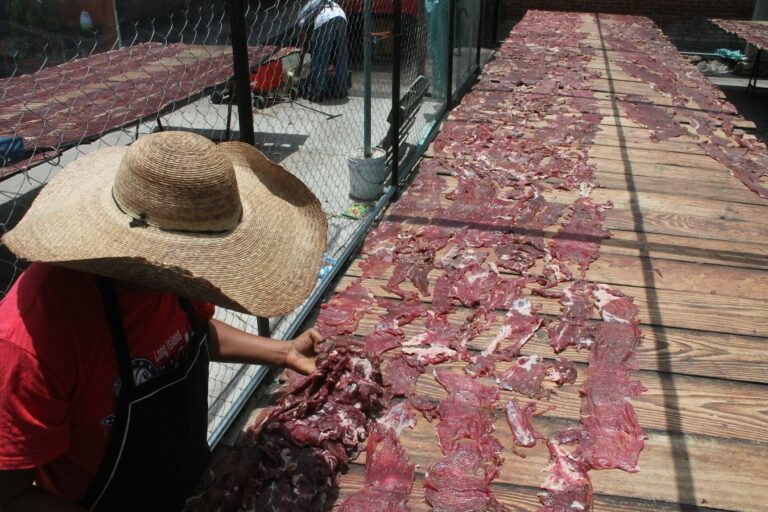Pulque: Unveiling the Ancient Elixir of the Aztecs
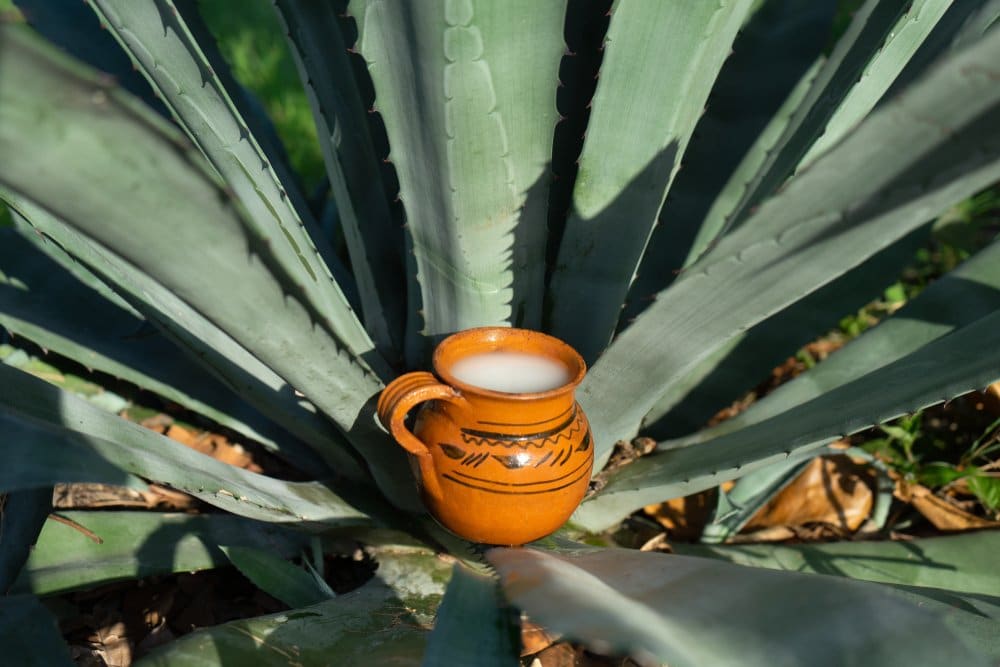
Pulque: Unveiling the Ancient Elixir of the Aztecs
Pulque is one of the most representative beverages in Mexico.
According to data from the Ministry of Culture, its popularity has been mainly in the central highlands.
This means that Hidalgo, Puebla, Tlaxcala, and Mexico State have an important tradition in producing this ancient beverage.
The taste of pulque may vary depending on the flavoring. But the classic one, unflavored, tastes like “champagne,” maybe it’s just me.
Some people find different notes on it, but it’s one of those beverages that makes it hard to describe its flavor.
The main market has always been Mexico City with its iconic “pulquerias” in the heart of the city.
Flavored pulques are better known as “curados.” Today, I will tell you how to prepare this “drink of the gods,” as the Aztecs baptized it.
When was Pulque Created?

It is not known precisely when the pulque was invented.
An ancient Nahuatl legend says that an Aztec princess named Xochitl was walking among the maguey plants one day and noticed that rabbits and opossums had made holes in the plant.
When she saw the bunny returning very happy, she decided to look closer.
She saw that a white liquid was coming out of the holes; she approached to taste it and was delighted with the flavor.
Excited – the story says – she gave it to her parents, who noticed that the taste and texture of the drink had improved after a few days.
Such is the legend of “teoctli,” as the Aztecs called pulque.
The Larousse Cocina dictionary defines pulque as an alcoholic beverage from central Mexico, obtained by fermenting the mead from the maguey.
However, according to research by the National School of Anthropology and History (ENAH), the actual origin of the drink could date back many years before the appearance of the Aztec people.
Numerous remains have been found in places such as the Tulancingo Valley in Hidalgo, indicating that other civilizations had utensils to manipulate the maguey and obtain all its benefits.
How is pulque made?
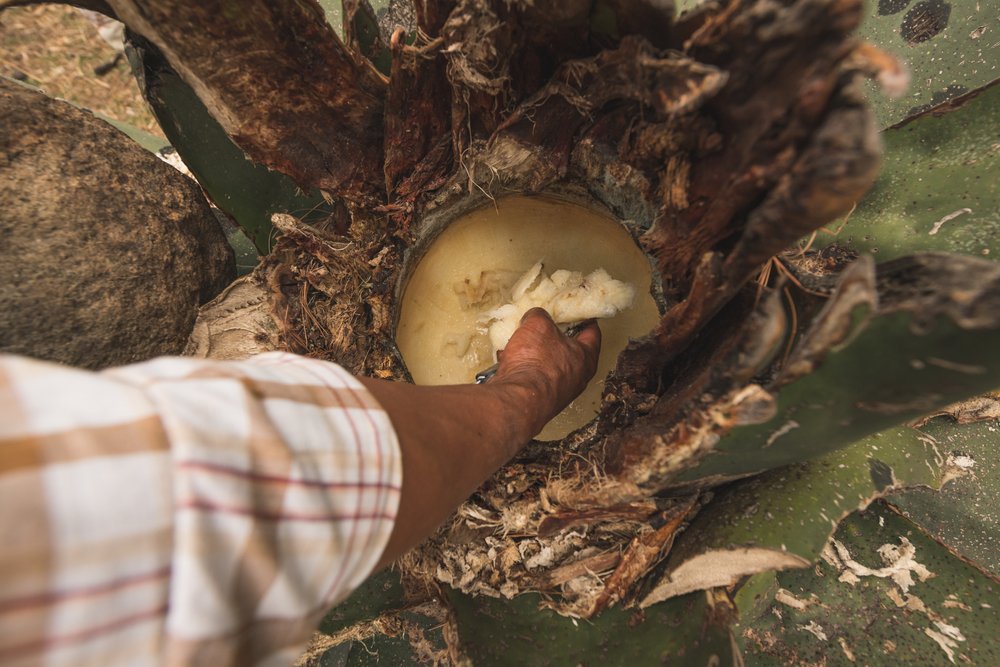
According to ENAH research, there are currently several methods for its preparation, depending on the region. However, the essential procedure does not change.
The first step is the cultivation of the maguey. This plant has to grow considerably, which takes between 8 and 12 years.
Once the maguey is the right size, it is said to be ready for “la capada,” the process through which the heart of the plant where the mead is found is reached.
After carefully cutting the stalks and reaching the heart, it is carefully cleaned and left to “sweat.”
That is to say; it is left to rest for a few days so that the liquid inside ferments.
Then comes the farmers’ scraping process known as “tlachiqueros.”
Who for days scrape the heart and, with the help of an instrument known as “ococote,” suck out the mead and then deposit it in containers.
The process is repeated until the maguey goes dry, which can take weeks depending on the conditions of the plant.
The Pulque Tinacales
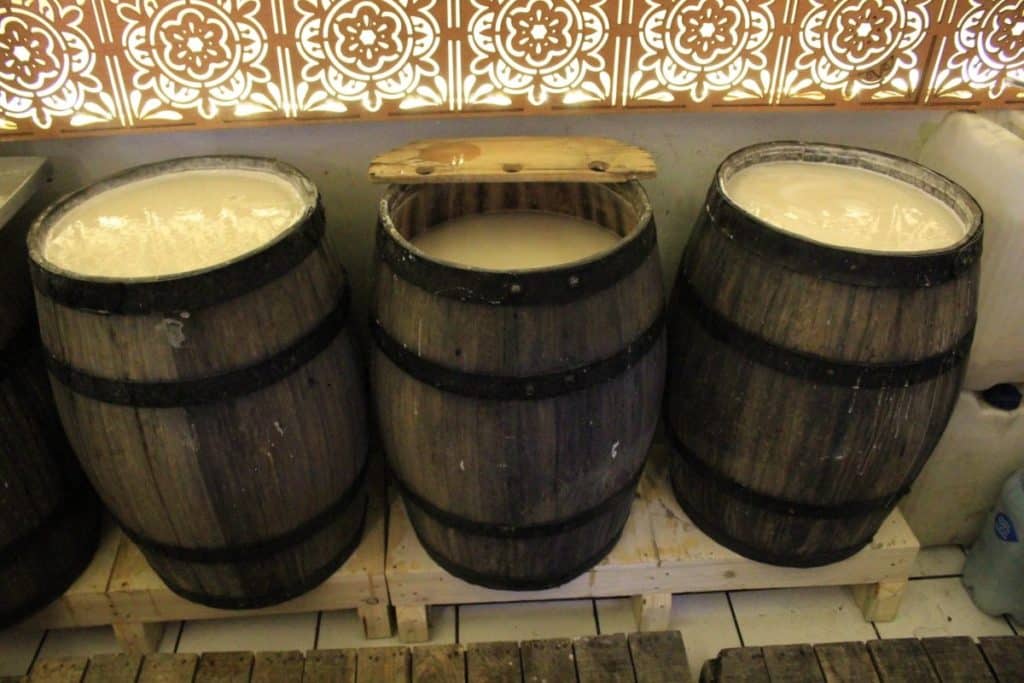
The mead is collected in trays and then taken to a tinacal, a specially conditioned space for pulque fermentation.
Then, it’s poured into fiberglass, wood, leather, or plastic containers.
The “seed” or “foot” is added to it, that is to say, the sediments left by the leftovers.
From that moment on, fermentation begins, which lasts approximately 24 hours.
During this time, the mixture is fed with more mead as needed.
The final product is a whitish-colored, smooth-textured beverage with an acidic flavor and a slightly sweet touch. The alcohol content ranges between 4 and 6 degrees.
This is pulque in its natural state, ready to be enjoyed. However, Mexicans have developed methods to “cure” pulque throughout history.
This is nothing more than adding the flavor of natural fruits, vegetables, and proteins.
Pulque is so versatile that you can combine it with practically any ingredient.
How to make cured pulque

In traditional bars, “pulqueros” place natural pulque in a half-liter measuring cup (an aluminum cup with a handle).
In another cup, the customer selects the fruit or vegetable flavor, and other ingredients.
They constantly pass from one mixer to another until a uniform liquid is obtained.
Each pulquero has its technique since some do it at a distance.
But in other establishments, they do it with the help of a blender.
If you want to prepare some of these curados at home, here are some typical flavors:
- Almond Curing: Grind the almonds and mix them with the pulque, which will sweeten immediately. Just add ground cinnamon
- Orange curing: Squeeze the oranges you want in the pulque. You can scrape the peels to add aroma. Sweeten with ground cinnamon
- Pineapple curing: Grind pineapple slices and add them to the pulque. You can also add a few cinnamon sticks, pepper, and cloves. The greater the amount of pineapple, the better the pulque curado
- Custard apple pulque: Remove the seeds, grind and mix the fruit with the pulque, and sweeten to taste
Pulque: Nutritional value
Researchers from multiple Mexican universities have verified pulque’s nutritional and medicinal value.
A single glass offers about 330 calories and a good amount of protein.
The oligofructose in mead promotes digestion and helps prevent colon cancer.
Some of the microorganisms contained in pulque can be considered probiotics, beneficial bacteria to improve digestion.
One cup contains 4.60 mg of vitamin C and 0.29 mg of vitamin B2.
In addition to having a high content of amino acids, enzymes, minerals, iron, phosphorus, thiamine, riboflavin, calcium, and niacin.
It does not contain fat or cholesterol.
If not consumed excessively, pulque can be a great ally in diets to gain weight healthily.
Now that you know all the benefits of this drink, don’t hesitate to go out and buy your favorite flavor the next time you see a pulque stand or prepare your own at home.
In addition to supporting the local economy, you’ll keep a great tradition alive.
5 Rules to drink pulque like a pro
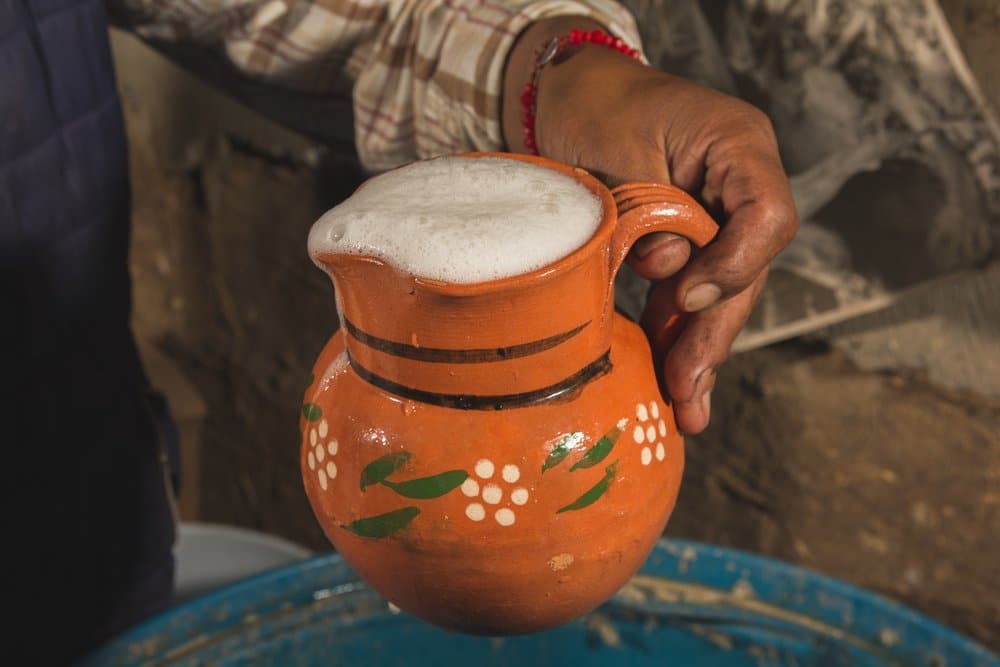
1. If you’ve never tried it, go for the “curadito”
Natural pulque has a strong flavor that you may not like initially.
To get your palate used to it, it’s best to try a fruity curado (I recommend something fresh like celery or pineapple).
2. To spot good pulque, look at its flavor
Pulque has a naturally strong flavor and certain viscosity because it comes from the maguey.
This should not be synonymous with bad taste.
Good pulque is pleasant to the palate; natural pulque tends to be bitter but should not make you nauseous as soon as you drink it.
3. If your pulque is hot, don’t drink it
This rule has a straightforward explanation: pulque is always fermenting.
When there is heat, this process is faster and causes the drink to decompose.
The temperature of your drink is a great indicator to know if you are consuming something of good or bad quality.
4. Accompany with Mexican food, especially spicy ones
To enjoy pulque the way it should be, you have to sit down and pair it with typical dishes such as:
- Black pot beans with epazote and macha sauce
- Chicharrón (pork rinds) in green sauce
- Barbacoa (which is perfect because they use the maguey stalks for cooking it)
5. Don’t drink pulque late at night
Pulque should not be consumed late at night because it keeps fermenting inside your body even after you drink it.
Therefore, if you drink pulque and go to sleep right away, it may make your stomach upset.
Conclusion
This fermented Maguey nectar stands as a remarkable testament to the rich cultural heritage of the Aztec civilization and continues to captivate both historians and enthusiasts alike.
As we’ve explored its origins, production process, and cultural significance, it becomes evident that Pulque is more than just a fermented beverage; it’s a symbol of tradition, community, and resilience.
Its resurgence in popularity not only highlights a growing interest in ancestral beverages but also serves as a reminder of the enduring legacy of indigenous cultures.
By embracing and celebrating this ancient beverage, we not only honor the Aztec legacy but also contribute to the preservation and revitalization of traditional practices in the modern world.
So, the next time you sip on a glass of elixir, remember the ancient roots of this elixir and toast to the rich tapestry of human history it represents.

